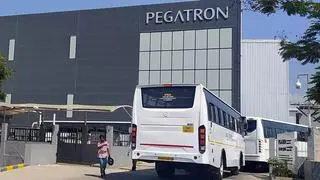As the curtains fall on the earnings season for the second quarter, one sector that has been under the lens is information technology. Tech Mahindra has been one of the best performers in a challenging environment.
Although demand for IT services is subdued, Tech Mahindra MD and CEO CP Gurnani tells Bloomberg TV India that the company hopes to post better H2 results than H1. It aims to be a prominent player in the internet of things (IOT) and system integration market to cash in on the Digital India and Smart City initiatives, he says.
The outlook on IT companies is clouded now. During every election year in the US, the immigration issues come to the forefront. H1B visas get quickly back-dated. What’s happening with the visa situation?
I have been a huge advocate of the maturity of US immigration laws.
I personally believe the whole H1 visa system that is currently invoked, coupled with L1 and L2 visas, is one of the main reasons why the US economy has flourished and how India and US trade has only increased.
I think it is a very elegant process. It is a very mature process. I know that the two senior senators are proposing some amendments to the current Visa Bill.
I am not surprised because at the end of the day this is an important issue for the government all over the world.
Governments do realise that even within their own countries, labourers and skilled workers will move from one location to another. It happens in India. A worker in Bihar would go to Mumbai or Delhi for better opportunities.
And the reason these cities will hire them is they need that skill. It happens within the US and will continue to happen across borders.
That is the only way to flourish in the industry.
We at Tech Mahindra are very conscious that our business model depends on it. But it is not only us. The business model of Accenture, business model of IBM and business model of many large American companies depends on skill availability, skill management and skill development.
Over the last 48 hours, we have got a lot of commentary from your peers who guided that the second half of the year will be tougher than the first because the visibility has got slower. Do you see a visibility concern given that IT spends are not really picking up as much as anticipated?
Maybe I have a contrarian view. I do believe that the first half (H1) was interesting.
The transformation of industry was happening. The reality is every boardroom now talks about IT and data security.
Every boardroom talks about innovation. Every boardroom talks about digital disruption. When I look at the opportunities for Tech Mahindra I am very clear that the internet of things (IOT) or any of the new technologies clearly play into my strength area, which is modernisation of networks or running networks better. That is number one opportunity.
Number two is anything to do with digital ultimately is about mobility. You have seen that at Flipkart — or anywhere else in the world — when people go to the e-commerce site they no longer go to the web.
About 70 per cent of the business has moved to mobile solutions. So I think mobility network, modernisation, digital, new enhancements are all opportunities and I would like to believe that my H2 results will be slightly better than H1.
How important is your recent collaboration with SAP?
SAP is one of the very important and strategic players in this business. I personally believe that SAP is making all the right moves to create the enterprises of the future. And I am happy that we are collaborating with them on designing various kinds of systems.
More important is that Tech Mahindra is saying that we would like to be a prominent player in the IOT and system integration market.
If you are to loosely translate this — whether it is a Digital India or Smart City initiatives, across the world, they will be built around censors, analysing the data and being able to use the data to improve your customer service.







Comments
Comments have to be in English, and in full sentences. They cannot be abusive or personal. Please abide by our community guidelines for posting your comments.
We have migrated to a new commenting platform. If you are already a registered user of TheHindu Businessline and logged in, you may continue to engage with our articles. If you do not have an account please register and login to post comments. Users can access their older comments by logging into their accounts on Vuukle.